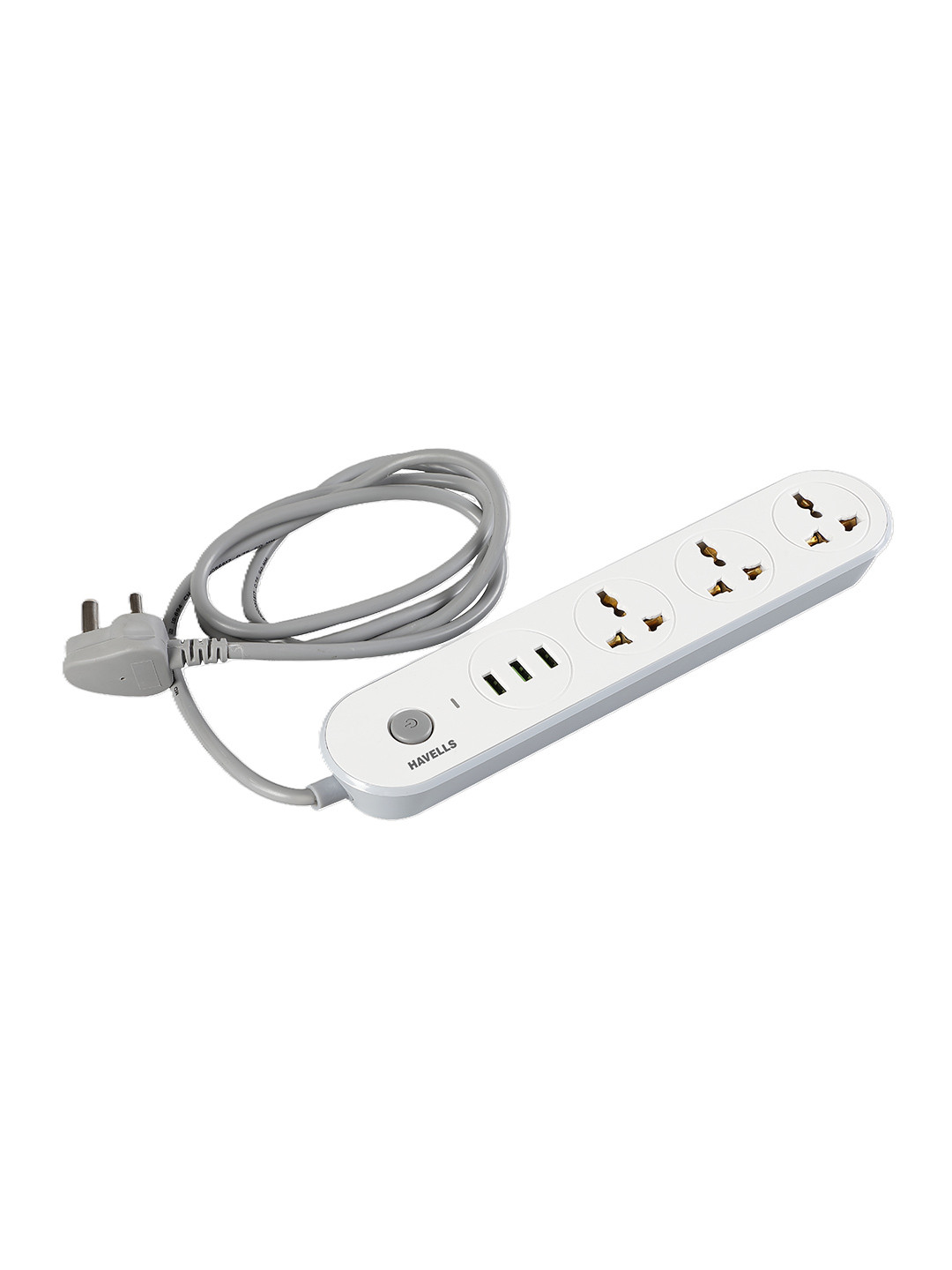TV Screen Size vs Viewing Distance: The Ultimate Guide To Choosing The Right Television
So, let's unravel the mystery of how screen size and seating distance must work hand in hand. And, while at it, bust the myth that "bigger is always better."

Read this blog to understand the right TV placement for a comfortable viewing experience.
There's something magical about buying a new television. The glossy screen, the sharp colours, the remote that feels like a magic wand, everything promises endless movie nights and cricket marathons. Yet, many households discover a problem soon after the excitement fades. The screen looks either too small for the room or painfully large, leaving eyes tired and necks strained.
This mismatch is far too common. People often judge TVs by price tags, brands, or screen size alone, forgetting one crucial element: the viewing distance. Think of it as the distance between your sofa set and the silver screen, get it wrong, and every film, match, or family drama looks off.
Let's clarify the relationship between TV screen size and viewing distance, and debunk the myth that bigger is always better.

Here is all you need to know about TV screen size and viewing distance. Also, check the TV mistake most buyers make.
Photo Credit: Unsplash
Cracking The Code Of Screen Size And Sofa Distance
1. Why Bigger Isn't Always Better
When it comes to televisions, most buyers believe a larger screen is the ultimate prize. After all, a 65-inch beast looks grand in the showroom. But here's the catch, your living room isn't a showroom. What dazzles under bright lights in the shop might overpower your cosy space at home. Imagine watching a film where every close-up looks like the actor's nose is about to leap off the screen. It's not immersive, it's overwhelming.
A television that's too large for your seating distance ends up creating more strain than pleasure. Instead of enjoying the subtle details, the eyes struggle to scan the entire frame. It's like sitting in the first row at the cinema, not exactly comfortable. The trick is balance. A well-matched screen doesn't scream for attention; it blends into the room and lets the story take over.
2. The Science of Screen Size and Distance
There's actually science behind this whole “how far to sit” discussion. The clarity of what you watch depends on the number of pixels and how close you sit to them. Sit too far, and details blur. Sit too close, and pixels stare back like tiny dots, ruining the magic.
Experts often suggest a simple formula: divide your viewing distance (in inches) by two, and you'll get the ideal screen size in inches. For example, if your sofa is around 8 feet (96 inches) away, the sweet spot is about a 48-inch TV. This keeps the visuals crisp without making them overwhelming.
Technology also plays a role. With 4K TVs, you can sit closer than with Full HD models without noticing pixelation. Still, the idea remains the same, distance and size must be friends, not rivals.
3. The Living Room Reality
Every home has its own personality, and the television must adapt. A modest flat with a compact living room doesn't need a gigantic 75-inch screen. It might look impressive during Diwali gatherings but feel uncomfortably huge on a quiet Tuesday evening when only the family dog is watching.
Consider how your living room is arranged. Is the sofa pushed against the wall? Do you have a centre table eating into space? Even curtains and lighting influence how the screen feels. What works for a sprawling villa may look comically large in a snug apartment. Think of your TV as part of the family, it should fit in without overshadowing everyone else.

Consider how your living room is arrange when deciding the viewing distance; Photo Credit: Unsplash
4. Eye Comfort: The Forgotten Factor
We often talk about sound quality, resolution, and smart features but rarely about eye comfort. A poorly matched screen size is like forcing your eyes into an unwanted gym workout. Staring up at a massive screen from too close can cause fatigue, dryness, and even headaches.
The eyes prefer a natural range of movement. A TV that matches your seating distance keeps the gaze steady and relaxed. Instead of darting around to keep up with fast-paced cricket shots, the eyes settle comfortably. Over time, this means fewer complaints of “burning eyes” after a late-night binge. In short, eye comfort should be a deciding factor when choosing size, not just the thrill of “bigger.”
5. Cost vs Comfort: The Hidden Equation
Here's a common mistake, spending ₹1.5 lakh on a giant screen only to realise it doesn't suit the room. That's money gone in the name of prestige, not practicality. Bigger screens naturally come at higher prices, and it's easy to feel pressured into stretching the budget.
But think of it this way: would you rather show off a massive TV or actually enjoy watching it every day? A balanced size not only saves money but often gives a better viewing experience. That extra ₹50,000 could instead go towards a soundbar, blackout curtains, or even a subscription binge fund. Value isn't about size, it's about smart choices.
Also Read: 10 Best LED TV Offers, From Xiaomi, Sony, Samsung To LG, In Amazon Great Indian Sale 2025
6. Cricket Matches, Films And Family Drama
The way a screen feels also depends on what you watch most. Cricket lovers often prefer slightly larger screens since wide shots of the stadium look grand. Movie buffs who crave cinematic feel may lean the same way. On the other hand, daily soap followers might find too large a screen unnecessary since the focus is mostly on faces and conversations.
So, think about your family's viewing habits. If Sunday means ten relatives huddled together for a T20 match, a larger screen may be justified. If most evenings are just two people catching up on web series, a mid-sized screen works beautifully. Your TV should serve your lifestyle, not dictate it.

The TV viewing distance and experience also depends on the type of content you are viewing; Photo Credit: Unsplash
7. Technology Changes the Game
Remember the old days of bulky box televisions? Back then, anything above 29 inches felt like a cinema. Today, with ultra-thin 4K and even 8K screens, the rules have shifted. Higher resolution means sharper pictures even at closer distances, so you don't have to sit across the room.
For example, a 55-inch 4K TV may feel comfortable in the same space where a 42-inch Full HD once reigned. But beware, the temptation to go bigger just because technology allows it can backfire. Always measure your space first. Newer technology gives flexibility, not a free pass to ignore distance altogether.
8. Cultural Habits and Seating Styles
One often overlooked factor is how people actually sit. Some families watch TV sprawled on the floor with cushions, others from a neatly aligned sofa set. In many homes, children tend to edge closer while adults recline at the back. This creates a range of viewing distances in the same room.
A clever solution is to pick a screen size that works for the average distance rather than catering to extremes. This way, whether someone perches on a dining chair or lounges cross-legged on the carpet, everyone enjoys a fair view. A flexible arrangement beats rigid calculations any day.
9. How Showrooms Trick the Eye
Here's a truth few shoppers realise, television showrooms are designed to make screens look smaller than they are. Huge halls, bright lighting, and walls lined with even bigger screens trick the eyes into believing a 65-inch TV is “normal.” Bring it home, and suddenly it looks like a cinema screen landed in your living room.
That's why it's wise to measure your space before entering the store. Carry those numbers like exam notes, distance from sofa to wall, width of the cabinet, even curtain length. Otherwise, the dazzling showroom atmosphere can nudge you into buying something that feels absurdly oversized once delivered.

Always measure your space before buying a TV to get the right size; Photo Credit: Unsplash
10. Finding the Sweet Spot
At the end of the day, the ideal television is one that feels natural in your home. Not too small that you squint, not too large that you flinch. It should melt into your evenings, whether you're following the latest thriller, watching reruns of favourite comedies, or catching a nail-biting IPL final.
A good rule of thumb: for a distance of 6–8 feet, a 43–50-inch TV works beautifully. For 8–10 feet, 55–65 inches feel right. Beyond that, you can go bigger, but always weigh comfort first. Remember, the best TV isn't the biggest, it's the one that makes every moment enjoyable without effort.
Products Related To This Article
1. TCL 139 cm (55 inches) 4K UHD Smart QD-Mini LED Google TV
2. VW 109 cm (43 inches) OptimaX Series Full HD Smart QLED Android TV
3. Vu 139cm (55 inches) Vibe Series 4K QLED Smart Google TV
4. Samsung 108 cm (43 inches) Crystal 4K Vista Ultra HD Smart LED TV
5. Xiaomi 138 cm (55 inch) X Ultra HD 4K Smart Google LED TV
Television shopping should be about joy, not regret. By matching screen size with viewing distance, households save money, protect their eyes, and create a space where stories come alive without overpowering the room. It's not a complicated science, just a matter of balance and awareness.
Next time you're tempted by a towering screen in the shop, pause. Picture it in your living room, measure the sofa distance, and imagine how it will feel not just today, but five years from now. After all, the real luxury isn't the size of your TV, it's the comfort of watching it without a second thought. And if you want to replace your existing one, you can alway check out TVs online to explore the latest features and sleek designs.
Disclaimer: The images used in this article are for illustration purpose only. They may not be an exact representation of the products, categories and brands listed in this article.

























